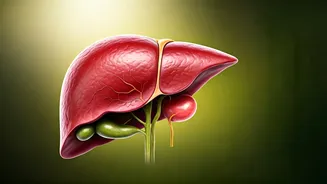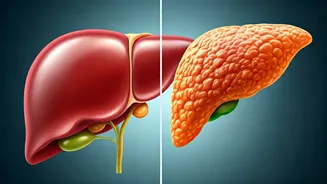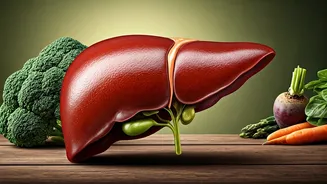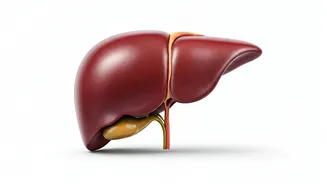Defining Fatty Liver
Fatty liver disease, characterized by excessive fat accumulation in the liver, is classified into two primary types: nonalcoholic fatty liver disease (NAFLD)
and alcoholic fatty liver disease (AFLD). NAFLD arises from factors not directly linked to alcohol consumption, often associated with obesity, diabetes, and metabolic syndrome. Conversely, AFLD develops due to excessive alcohol intake, causing fat buildup and potential liver damage. This condition signifies a critical state of liver health that needs immediate attention, possibly leading to inflammation and liver damage, and even cirrhosis. The liver, a vital organ, is crucial for metabolism, detoxification, and nutrient processing, making its well-being crucial. Recognizing the type of fatty liver is crucial for understanding its causes and how to manage it effectively. A healthy lifestyle with a balanced diet and consistent exercise can help manage fatty liver disease.
Uncovering the Causes
Several factors contribute to the development of fatty liver disease. In NAFLD, insulin resistance, obesity, high cholesterol, and triglycerides are significant contributors, often related to metabolic syndrome. Genetic predisposition also plays a role, increasing the risk for some individuals. Dietary choices, such as a high intake of processed foods and sugary drinks, also contribute to the condition. The prevalence of NAFLD reflects the global rise of these risk factors. For AFLD, the primary cause is excessive alcohol consumption, as the liver struggles to process the alcohol. The amount and duration of alcohol intake are key factors determining the severity of liver damage. It's crucial to consider these risk factors and adjust lifestyle habits to prevent or mitigate the disease. Therefore, being mindful of personal health, lifestyle choices, and any underlying conditions is imperative.
Recognizing the Symptoms
Fatty liver disease often presents with subtle or no symptoms in its early stages, making early detection challenging. As the disease progresses, individuals may experience fatigue, abdominal discomfort, and a feeling of fullness. In more severe cases, symptoms can include jaundice (yellowing of the skin and eyes), swelling in the legs and abdomen, and confusion. These symptoms usually indicate advanced liver damage, such as cirrhosis. Early-stage symptoms can be easy to overlook, highlighting the significance of routine check-ups and regular health screenings. Understanding these signs is crucial because, if not addressed, the disease can cause severe health complications, including liver failure. Therefore, being aware of these potential symptoms is vital for seeking medical attention at the first signs of health issues.
Managing the Condition
Managing fatty liver disease involves lifestyle changes, medical treatments, and regular monitoring. For NAFLD, the initial steps involve diet and exercise, which can help reduce weight, improve insulin sensitivity, and lower cholesterol levels. A balanced diet rich in fruits, vegetables, and whole grains is recommended, while processed foods and sugary drinks should be limited. Regular exercise, such as brisk walking or jogging, can greatly improve liver health. For AFLD, the primary management strategy involves complete abstinence from alcohol to prevent further liver damage. Medications, such as vitamin E and pioglitazone, may be prescribed to manage inflammation and improve liver function. In severe cases, a liver transplant may be considered. Close collaboration with healthcare professionals and consistent adherence to the treatment plan are crucial for successful management and improved quality of life.
Importance of Prevention
Preventing fatty liver disease is centered on adopting and maintaining a healthy lifestyle. For NAFLD, this includes regular exercise, weight management through a balanced diet, and managing underlying conditions like diabetes and high cholesterol. Limiting processed foods and sugary drinks can also help mitigate risk. For AFLD, the primary prevention method is moderate or no alcohol consumption. If you choose to drink, do so in moderation, meaning up to one drink per day for women and up to two drinks per day for men. Regular health check-ups and early detection are also vital. Regular check-ups help to identify and address any potential health concerns early on. Therefore, by adopting these lifestyle practices, individuals can greatly reduce their risk of developing fatty liver disease and maintain their overall health.









